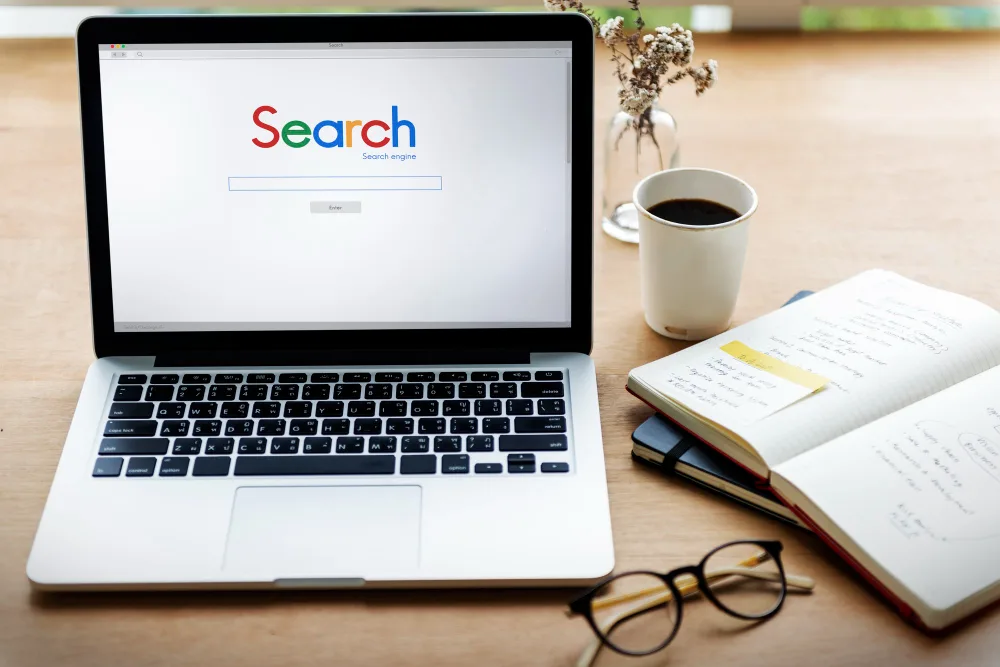Your beautifully designed Squarespace website doesn’t show up in Google search results? You’re not alone. Google controls over 92% of search traffic, and ignoring Squarespace SEO warning signs can limit your online visibility and stifle your growth potential.
Many website owners make a crucial mistake. They rely on Squarespace’s built-in SEO features without knowing their limitations. The SEO completion score only shows whether simple fields contain data, not how well they perform. Squarespace SEO optimization needs more than checked boxes. You just need strategic keyword placement, quality content, and technical refinements.
This piece reveals the warning signs of your Squarespace site’s poor search performance. We’ll help you spot indexing problems and explain why AI-generated search overviews are reducing click-through rates by 20% to 64%. Our analysis of over 2,000 sites shows that successful Squarespace websites consistently maintain better backlinks and content. Your site can join these high performers if you act now.
Squarespace SEO Warning Sign #1: Your Site Isn’t Showing Up on Google

Picture this – you’ve spent countless hours creating your beautiful Squarespace website, but then you find that there is no way for potential visitors to see it. Your site doesn’t show up in Google search results, which means you’re basically running a digital storefront on a deserted street. It might be the most worrying sign of all.
Check if your site is indexed.
You can easily check if Google knows your site exists with a simple site search. Just go to Google and type “site:yourwebsite.com” (use your actual domain name). No results mean Google hasn’t indexed your site. You can also try searching for your brand names or specific page titles. If Google shows nothing about your site, you definitely have an indexing problem.
A website that doesn’t appear in search results may not exist for most potential visitors. Even the best-designed Squarespace site stays invisible to the people you want to reach if it’s not indexed correctly.
Verify with Google Search Console
Google Search Console gives you a better way to check your site’s indexing status. A free tool shows you exactly how Google sees your website. Once you’ve verified you own the site, you can look at the “Coverage” report to see the number of pages Google has indexed.
The “URL Inspection” tool lets you check individual pages, too. Pages that aren’t indexed can be submitted for indexing right through the tool. Google Search Console also tells you about any crawl errors that might be stopping proper indexing, so you get a complete picture of what needs to be fixed.
Common reasons for deindexing
Google might not index your Squarespace SEO warning for several reasons:
- Accidental noindex tags: Squarespace sometimes adds “noindex” directives that tell search engines to skip your pages
- Missing sitemap: Google can’t find and index all your pages without a proper XML sitemap
- Poor internal linking: Pages that aren’t linked in your site’s navigation structure stay hidden
- Low-quality content: Google might ignore pages with thin or duplicate content
- Robots.txt blocking: Wrong settings could accidentally block search engines
Password-protected pages create a common problem specific to Squarespace because search engines can’t access them. New sites also need some Time before Google’s crawlers find and index them naturally.
Warning Sign #2: Your Pages Have Low Click-Through Rates

Your Squarespace site shows up on Google, but nobody clicks through? Low click-through rates might be the reason. This hidden problem happens when your site appears in search results but fails to grab anyone’s attention.
Unclear or missing SEO titles
The blue clickable text in search results is your SEO title. A poorly optimised title wastes a great chance to pull in visitors. Good titles should:
- Include your target keyword near the beginning
- Stay under 60 characters to prevent truncation
- Clearly convey what users will find on your page
Most Squarespace users stick to basic page names or skip title customisation. Your title gives searchers their first glimpse of your page—so make it match what they’re looking for.
No compelling meta descriptions
Meta descriptions work like your search result’s “elevator pitch” and give users a sneak peek. Google pulls random text from your page when you don’t write it, which often leads to confusing snippets.
A good meta description:
- Contains 150-160 characters
- Includes your primary keyword
- Provides a clear summary with a call to action
Meta descriptions don’t boost your rankings directly, but they drive click-through rates up. Better descriptions can get you more clicks even if your position stays the same.
Lack of social sharing of images
The image that pops up when someone shares your Squarespace site comes from your social sharing settings. Random visuals from your site appear when you don’t set a specific image, which looks unprofessional.
Your social sharing images need to be:
- Landscape-oriented (to prevent cropping)
- Branded with consistent colours and fonts
- Sized correctly (1500px width recommended)
Custom sharing images for key blog posts work better than using one image everywhere. This extra effort pays off with better engagement when people share your content on different platforms.
Warning Sign #3: Your Content Isn’t Ranking for Any Keywords
Your Squarespace site might be perfectly indexed with decent click rates. Yet the analytics show zero keyword rankings. It means search engines don’t see your content as relevant to any search queries – a frustrating situation indeed.
No keyword research before publishing
Writing content without keyword research is like fishing blindfolded. Many Squarespace users create pages based on gut feelings rather than solid data. They guess what people search for instead of checking the facts. Your content needs strategic direction that comes from understanding search volume, competition, and related queries.
Google Keyword Planner or SEMrush can help you find terms that match your business. Look for keywords with reasonable search volume and competition levels.
Not using keywords in headings and body.
Just knowing your keywords isn’t enough – you need to place them strategically. Search engines give extra weight to terms that appear in:
- H1 and H2 headings (not just buried in paragraphs)
- The first 100 words of content
- Image alt text and file names
- URL structures
Random keyword stuffing can hurt your rankings. Focus on natural placement that makes your content readable while showing its relevance.
No blog content or outdated posts
Search engines have little reason to return to a static Squarespace site. Blogs are great content hubs packed with keywords that answer your potential customers’ questions.
Regular helpful articles tell Google your site stays active and authoritative. Old posts with outdated information can hurt your credibility and rankings. Keep your content fresh by updating older posts to maintain accuracy.
Warning Sign #4: You’re Relying Too Much on Squarespace’s AI Prompts
Squarespace’s built-in SEO tools promise easy optimization but create a dangerous false sense of security. Site owners often fall into this trap. They believe their SEO work is done after completing the platform’s automated prompts.
Why the SEO completion score is misleading
Squarespace’s SEO completion score only shows if you’ve filled out designated fields—not if your content will rank. A 100% completion score doesn’t guarantee search visibility. We checked these scores based on titles and descriptions rather than their quality or strategic value.
The truth about AI visibility prompts
Squarespace’s AI-generated content recommendations choose convenience over what works. These prompts generate generic, keyword-stuffed descriptions that don’t match real user queries. More importantly, they don’t deal very well with competitive analysis or search intent—two essential factors in successful Squarespace SEO optimization.
Focus on real user intent, not AI checklists.
Your success depends on understanding what your audience searches for, not automated tools. You should analyse:
- Your potential customers’ questions before making decisions
- Their problems need solutions
- Their natural search language
Content that answers these questions will beat anything created just to satisfy an AI checklist—search engines reward pages that serve human needs, not those optimised for algorithms.
Conclusion
Squarespace websites showcase stunning designs, but looks alone won’t drive organic traffic to your site. This piece explores four critical warning signs that your Squarespace SEO needs immediate attention. Your visibility suffers silently while competitors capture the traffic you deserve.
Google indexing serves as the foundation of all search visibility. Your beautiful website stays hidden from potential visitors, regardless of your content quality. Low click-through rates point to problems with your titles and meta descriptions that push visitors away instead of drawing them in.
Content failing to rank for target keywords indicates poor keyword research or weak implementation. Blind trust in Squarespace’s built-in SEO tools and AI prompts creates a false sense of security as your actual search performance declines.
You can fix these problems before lasting damage sets in. Check your site’s indexing status through Google Search Console first. Create compelling titles and descriptions that grab attention. Proper keyword research and strategic incorporation of those terms into quality content will serve real user needs.
Your Squarespace website represents a significant investment of Time and resources. Quick action on these warning signs will protect your investment and help your site evolve from a beautiful digital business card into a powerful lead-generation tool. Success or failure often depends on how quickly you spot and fix these critical SEO warning signs.








